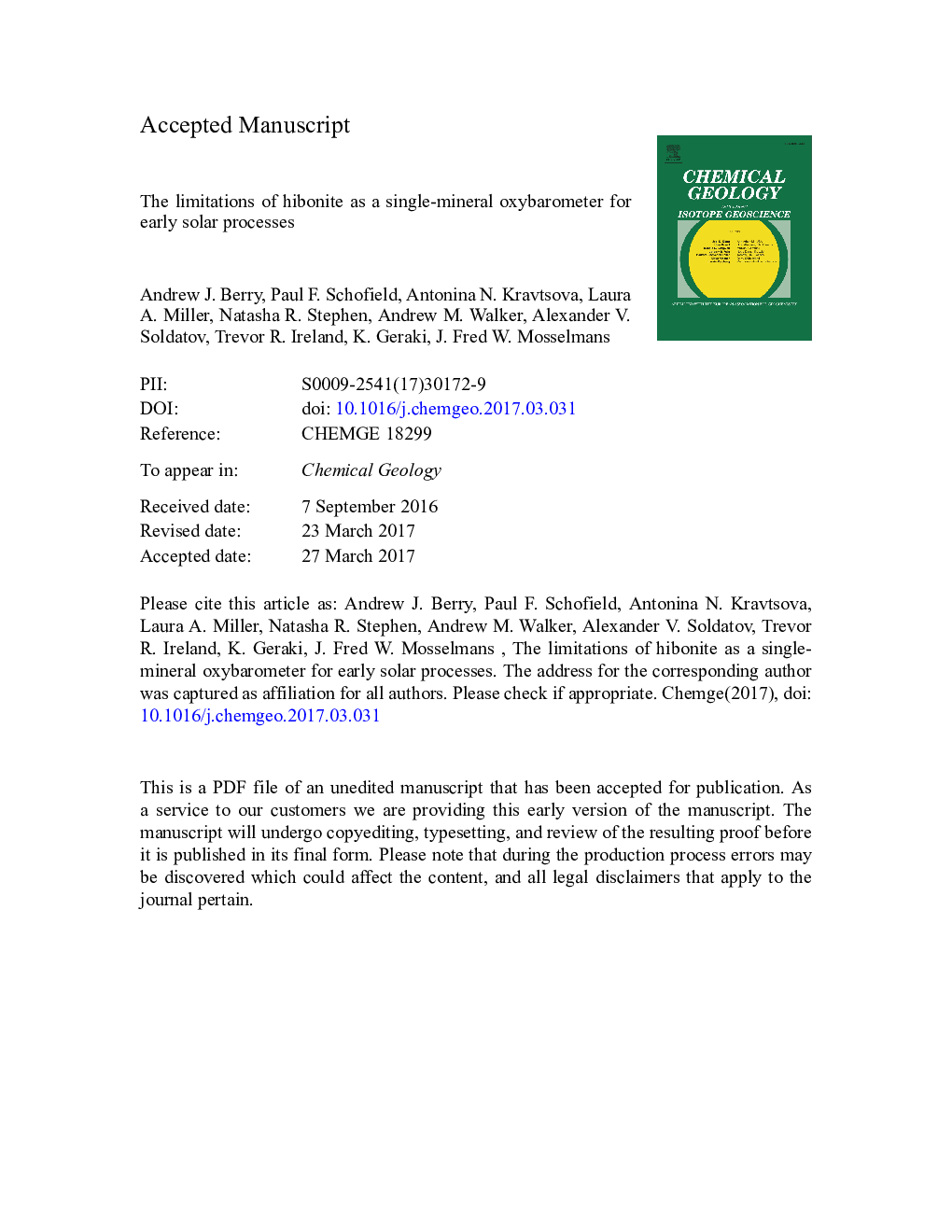| Article ID | Journal | Published Year | Pages | File Type |
|---|---|---|---|---|
| 5782816 | Chemical Geology | 2017 | 27 Pages |
Abstract
The relationships between the composition of hibonite with the general formula CaAl12-2x-yMgxTi4+xTi3+yO19, the oxidation state of Ti (Ti3+/ΣTi, where ΣTi = Ti3+ + Ti4+), and oxygen fugacity (fO2) were investigated experimentally. It was found that hibonite can be synthesised with a range of Ti3+/ΣTi values at constant fO2 and with a constant Ti3+/ΣTi value for a range of fO2s. It was also found that if hibonite with the formula CaAl12-yTi3+yO19 (Ti3+/ΣTi = 1) is equilibrated with a melt of CAI composition at fO2s below the iron-wüstite buffer then the resulting hibonite contained Mg, with Mg per formula unit (pfu) ~ 0.8 Ti pfu, and Ti3+/ΣTi ~ 0.2, irrespective of the fO2. These results suggest that the availability of Mg, rather than fO2, is the key factor that determines Ti3+/ΣTi of hibonite. The structures of synthetic samples of hibonite with the general formula CaAl12-2xMgxTi4+xO19, where 0 â¤Â X < 1, were determined by Rietveld refinement of X-ray powder diffraction data. The predominant site occupied by Ti4+ was found to change from M2 to M4 with increasing Ti content. The range of Ti concentrations over which the site occupancy changed corresponds to that observed in meteoritic hibonite. This change in the Ti4+ site produces changes in the Ti K-edge XANES spectra, particularly in the intensity of the pre-edge feature, for constant Ti3+/ΣTi. The observed dependence of the pre-edge on the Ti4+ site was reproduced by ab initio simulations of the XANES spectra. The XANES spectra of natural hibonite with variable Ti content from the Murchison carbonaceous chondrite closely match the spectra of the synthetic samples with similar Ti contents. These differences in the spectra of meteoritic hibonite could be misinterpreted as being due to changes in Ti3+/ΣTi, but are instead due to differences in ΣTi, which relate to the petrogenetic history. Crystal chemistry exerts a first order control on the Ti site occupancy and Ti3+/ΣTi value of hibonite. As a result, no simple relationship between Ti3+/ΣTi and fO2 should be expected. It is unlikely that hibonite will be useful as an oxybarometer for solar processes without Ti3+/ΣTi standards that are compositionally matched to the unknown.
Related Topics
Physical Sciences and Engineering
Earth and Planetary Sciences
Geochemistry and Petrology
Authors
Andrew J. Berry, Paul F. Schofield, Antonina N. Kravtsova, Laura A. Miller, Natasha R. Stephen, Andrew M. Walker, Alexander V. Soldatov, Trevor R. Ireland, K. Geraki, J. Fred W. Mosselmans,
